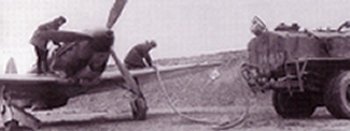 |
Lilya Litvyak was born in Moscow on the 18th of August, 1921. Lilya was her nickname, as her actual name was Lidiya. She was regarded by all as a "strikingly beautiful woman", which helped earn her public appreciation and added to her success as a fighter pilot, this served the propaganda ministry very well. Litvyak started flying at 16 neither her Mother of Father new of this. Litvyak was posted to Kherson for military flying and she reputedly soloed in less than 4 hours, after she graduated she became a flying instructor. When Germany launched operation Babarossa Litvyak had over 100 flying hours behind her, she was transferred to 586.IAP and was posted to Saratov in the summer of 1942. Her first two victory's were in a La-5, the first a BF 109 and a JU 88 on the 13th of September 1942. Shortly after she scored another JU 88. At the end of 1943 Litvyak was posted to 296.IAP this time flying Yak-1s, her success grew over the course of five months and she scored a number of kills. During this time she was injured three times the first was on the 22nd of March when she claimed another JU 88 and then on the 16th and 18th of July. Her great friend and another female fighter pilot Budanova was also killed around this time. On the 1st of August 1943 while flying her fourth sortie of the day her Yak-1 was shot down by Luftwaffe aircraft, she was just 21. Because of her notoriety amongst the Germans, eight Messerschmitt Bf 109's concentrated solely on Lilya's Yak-1 with number '23' on board, and it took all eight of them to finally shoot down the 'White Rose of Stalingrad'. No trace was found of Litvyak for many years.
|
